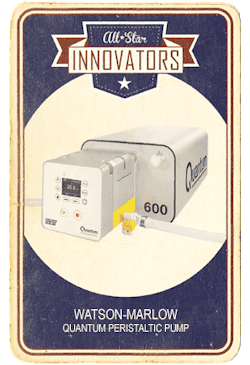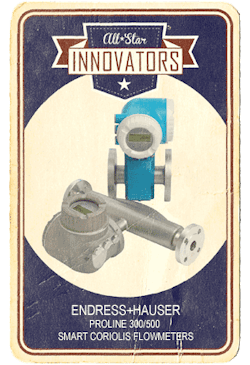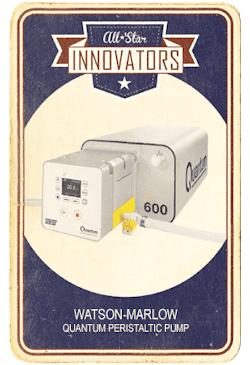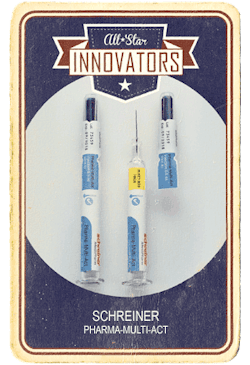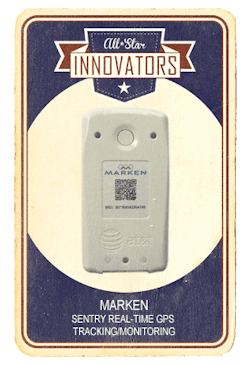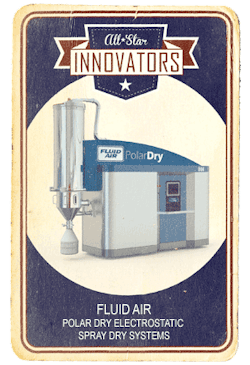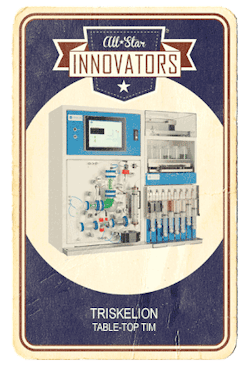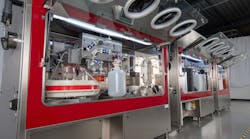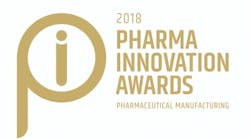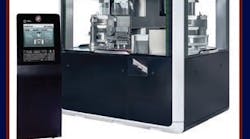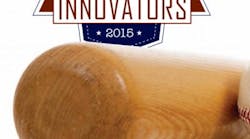Nothing says summer like a sunny day at the ballpark, cheering on your favorite team, eating a juicy hotdog and drinking an ice-cold beverage. For some, the experience alone makes them happy; for others, they also need the win. As with any winning team, the players must work together for a common goal — and the pharmaceutical industry is no different. The industry strives to hit home runs with medicinal breakthroughs, using new technology and products to help them round the bases.
Of course, no team brings home a victory every single game. Similarly, there are plenty of errors that occur in clinical trials and product prototypes, but that doesn’t stop pharmaceutical innovation. Competition drives players to keep trying until they create the perfect formula for success. Take the Chicago Cubs, for example, it took them 108 years to field the perfect combination of players that earned them a World Series trophy (and finally put the curse of the goat to rest).
The editors of Pharmaceutical Manufacturing have their own trophies to award in this issue. Equipment suppliers strategized and fielded winning teams that produced technological innovation in the pharma world. They delivered game-winning solutions to increase efficiencies and decrease costs in drug manufacturing operations. Although not a comprehensive list, we bring you our highlight reel of MVPs (most valuable products).
As in the All-Star game, we showcase a variety of players from different ends of the country. All-Star Innovators include recently introduced technologies, systems and services that, based on their applicational and technical merits, were selected by Pharmaceutical Manufacturing’s editors and advisors to be on this year’s roster.
ANALYTICAL AND MONITORING DEVICES
The lead-off hitter this season is B&W Tek’s i-Raman Pro ST high throughput portable Raman spectrometer. Using See_Through technology, this system enhances the Raman signature of the content, allowing for identification of materials inside visually opaque containers such as white/red plastic bottles, paper envelopes, glass and tablet coatings. See_Through technology enables this system to identify materials through barrier layers, measure dark materials and provide consistent, accurate measurement of non-uniform samples. Fans say it “provides research grade capabilities on the go.”
The system achieves this by using a high throughput spectrometer and deep cooling to give a stronger signal and stability over longer integration times. It also features a large sampling area that improves analysis reproducibility for heterogeneous samples and minimizes power density, which makes it easier to measure darker materials that would be susceptible to photo damage under conventional Raman spectroscopy. In addition, it is a fully integrated system with a built-in tablet computer preinstalled with BWSpec Mobile, software that allows for material identification and real-time predictions.
Batting second, Endress+Hauser’s Proline 300/500 smart Coriolis mass and electromagnetic flow instruments simplify installation, speed commissioning, and streamline operation and maintenance. Their lineup includes Proline Promass Coriolis mass flowmeters, available in 11 models from 1/24 to 14 inches in diameter for measuring flows up to 100,000 tons per day; Proline Promag flowmeters are available in sizes from 1/12 to 78 inches for volume flows up to 634 mgd. Equipped with aluminum, hygienic stainless-steel or cast stainless-steel housings, Proline offers flexibility for all environments including high temperatures, corrosive fluids, hygienic and sterile.
The 300 series is compact with the transmitter mounted integrally to the sensor, while the 500 series provides remote accessibility of the transmitter from sensors. Proline 300/500 lets users access signals and data through HMIs to match plant preference. One of Proline 300/500’s new innovations is its three-part Heartbeat Technology with remedy-based diagnostics, monitoring and verification for satisfying regulatory, contractual, quality, safety or fiscal requirements.
BIOPROCESSING
Accelerated innovation in the biopharmaceutical industry has generated a shift toward more flexible manufacturing environments. Showcasing this flexibility is Adaptive Bioproduction Suite from Germfree - a cleanroom trailer that provides configurable space for cGMP production, R&D and biocontainment within a self-contained mobile platform. The 53-foot Bioproduction Suite is a new approach for rapid deployment of cleanrooms and adaptable platforms for bioprocessing.
Next up, Watson-Marlow Fluid Technology Group's Quantum peristaltic pump with ReNu single-use (SU) cartridge technology sets a new standard for high-pressure feed pumps in SU tangential flow filtration, virus filtration and high-performance liquid chromatography. The pump technology enables higher downstream process yields throughout the pressure range, delivering virtually pulse free linear flow, ultra-low shear and easy validation.
Quantum delivers higher accuracy with flow linearity independent of back-pressure, removing the need for flow meters and load cells. This virtually pulse-free performance enables constant pressure and maximizes process efficiency. At the heart of the pump is a ReNu SU Technology cartridge, which is simple to install, enabling its aseptic fluid paths to be positioned quickly and accurately, ready for use. It slides easily into position, allowing for a change of fluid path in minutes.
PACKAGING AND HANDLING
Sure to be a big hit with packaging fans, CSP Technologies has developed Activ-Seal closures, with gas-scavenging technology built directly into an induction-sealed, tamper-evident screw cap. The closure’s orifice-reducing element is affixed onto the top of the bottle during the induction sealing process. It is covered by a lift and peel foil seal which, once removed, enables metered dosing. The scavenging component, offering combinations of moisture, volatile organic compounds and odor management, is permanently positioned on the underside of the orifice reducer, ensuring the product protection never leaves the bottle, even after opening.
The team manager says Activ-Seal closures offer improvement over traditional methods of ensuring product stability, such as inserting canisters or sachets, which require additional equipment and carry the risk of accidental ingestion. In addition, the technology fits within standard caps and can be applied with standard capping and induction sealing systems.
Next at the plate, Schreiner MediPharm offers a novel marking solution for syringes. The Pharma-Multi-Act provides irreversible first-opening indication that can include additional security and indicator functionalities. It features a label-integrated perforated tab that extends onto the syringe cap. When opening the cap, the label’s first-opening indication is automatically triggered along the perforation, so the label and container are opened simultaneously, without an extra step for seal removal.
In the process of opening Pharma-Multi-Act, a detachable documentation label is exposed on the cap, which can easily be peeled off. The area underneath that label can be used as an indicator field for various functions, such as warning messages, security/authentication features, an integrated NFC chip, or a temperature or UV indicator activated upon the label’s opening.
Third up this inning, another packaging player that improves safety. Marken’s Sentry device, designed specifically for pharma, provides the latest GPS technology available for drug shipments.
The device provides real-time, track and trace capability through custom-designed software, monitoring and reporting crucial variables such as location, temperature, light exposure, motion, atmospheric pressure and shock.
For an additional layer of shipment protection and tracking, Marken offers geo-fencing at airports and will create a customized geofence for each client’s shipping route, including manufacturing sites, warehouses, clinics and hospitals. Marken has an exclusive agreement with OnAsset Intelligence for use of their most advanced GPS tracking device on key shipments.
CONTAINMENT AND ASEPTIC PROCESSING
The fourth inning leads off with ProSys Containment and Sampling Technology, which builds a model of every proposed containment system, allowing pharmaceutical manufacturing operators to test the ease of use and effectiveness of the system long before the final system is installed. The company says it encourages all personnel to place their hands in the glove boxes, reach for the switches, mock the entire process including material transfer, and give real-time feedback on comfort level and accessibility.
Before the “mock-up,” ProSys issues a detailed Ergonomic Model Specification (EMS) to the client, explaining the steps involved in the mock-up process. It provides an overall navigation map describing how the user will move about the model, and ensure that each of the operational goals is achieved. The “mock-up” modeling allows all stakeholders to be in one place, at one time, and eliminates time delays on drawing approval. The physical model can trim approvals down to a few days with benefits to overall project delivery timelines.
Pinch hitting for another aseptic player is Vanrx Pharmasystems. Its SA25 Aseptic Filling Workcell is billed as the first gloveless robotic isolator for making sterile injectables. With a gloveless isolator, particle counts as low as ISO 2 levels become possible, the company says. Inside the isolator, the mechanical design is simple, allowing for complete clean-in-place and vapor-phase hydrogen peroxide decontamination.
The company designed this process with no need for human intervention through glove ports. With no conveyors, belts, sortation devices or mouse holes, this is billed as the first completely closed isolator. The Workcell’s design eliminates many sources of particle generation, such as aluminum crimp caps; and single-use consumables prevent cross-contamination.
The machine is designed for flexible production of multi-therapy portfolios, with new technologies that provide aseptic assurance and process repeatability.
SOLID DOSE PROCESSING
Batting first for the solid dose players, Fluid Air’s PolarDry Electrostatic Spray Dryers use electrostatic technology, which allows for low temperature spray drying, “near perfect” encapsulation and selective agglomeration in the creation of particles. Electrostatic spray dry technology has many advantages including superior morphology, longer shelf life, non-reactive processing, minimal emissions and low energy consumption compared to traditional spray drying processes, according to Fluid Air fans.
The company says this technology will open a new branch of Active Pharmaceutical Ingredients that previously could not be produced in a powder form due to the required high temperatures of traditional spray drying. Using PolarDry technology, particles can be produced at ambient to 80° C inlet conditions. Low temperature processing eliminates ingredient loss, degradation or denaturalization. Also, this single step process eliminates the need for secondary operations.
The next solid-dose hitter, Pharma Technology Inc., offers a standalone iSeries In-Process Control (IPC) Tablet Tester. Ideal for automated sampling and testing of tablets, the module provides analysis capabilities for weight, thickness, diameter and hardness - all in a compact, OEB 3 containment design.
One of the most notable stats is the unit’s dust-mitigation features. At the heart of the design is a strict separation of dust or tablet fragments from the production stream, resulting in uninterrupted manufacturing that can last several days rather than a few hours. The module’s testing area is completely segregated from its technical housing, providing no gap for possible product ingress in the power transmission compartment.
Batting clean-up for team solid dose is STEERLife’s INTEGRAAL with Fractional Lobe Processor (FLP). A truly continuous, seamlessly integrated, single-pot processor, the FLP is built on the principle of “flow stream in continuity.” The entire sequence of feeding, agglomeration, drying and sizing occurs in a “single pot” within a mean residence time of only a few seconds, unlike some systems that link unit operations via automatic mechanical transfer. Since the process achieves steady state right from the start and the energy transfer is reproducible over wide-ranging magnitudes, the product characteristics remain consistent even on longer or larger scale operations.
The FLP provides improvement in building temporal and spatial control in process engineering through removal of hot spots and dead zones, while maintaining higher level of process continuity making it beneficial for solid dose manufacturing. The technology has the potential to design, create and manufacture different types of products with highly controlled physicochemical attributes making it a true, versatile continuous processor enabling QbD. Additional benefits include: reducing human intervention and footprint; improving process stability and compliance; and minimizing waste.
DRUG DELIVERY
Representing Drug Delivery, heavy hitter Triskelion introduces its Table-top TIM (Triskelion Intestinal Model), which is a complete digestive system simulation - essentially a fake stomach - used to test bioavailability of drugs and for gastrointestinal research. The system simulates the dynamic physiological processes and conditions within the GI tract, such as transit, body temperature, peristaltic movements, pH, gastric and intestinal enzymes and bile salts. The GI conditions in human healthy adults are simulated, but these can be adapted to simulate a range of target populations, such as infants and patients with impaired gastrointestinal conditions or to simulate the GI physiology of animals. Its compact, modular design enables fit-for-purpose configuration, and the unit provides improved operational ease while lowering running costs.
DATA ANALYTICS AND IIOT
Representing perhaps the most sought-after category in the game, Adents (jointly developed with Microsoft) introduced Adents Prodigi, Cloud serialization and traceability software. It is said to be the only Level 4 traceability solution that can centrally manage regulatory requirements mandated in the pharmaceutical industry. Based on Microsoft’s Azure cloud platform, Adents Prodigi provides comprehensive tools and applications for data analysis and data processing so that pharma companies and CMOs can make use of the immense amounts of data that accumulate during the serialization and track & trace processes.
In addition to allowing for compliance with such complex regulations, Adents Prodigi opens up new possibilities beyond regulatory compliance in terms of data analysis (including Microsoft Power BI), machine learning tools or additional capabilities through third party solutions such as OEE Tracker and Supplier Portal developed by Supply Chain Wizard.
Next up from manufacturing analytics specialist Sight Machine, is Sight Machine 2.0 - a big data platform developed and stress-tested for large-scale deployment across lines, plants and extended supply chains. The platform uses advanced analytics and artificial intelligence to help manufacturers improve quality, productivity and visibility. Offering the world’s only plant digital twin, the technology combines process and product data into a set of analytical models that mirror machines, lines, plants and supply chains.
Among the major new features in Sight Machine 2.0 are Global Ops View for real-time visibility across the enterprise; Contextualized Dashboards that can be tailored for the needs of a user or function; and Downtime Classifier, which uses machine learning to determine the reasons for downtime.
Last but certainly not least is Tego’s touchless, digital environmental monitoring solution for cGMP manufacturers. The solution is built on the company’s asset intelligence platform and leverages advances in IIoT technology to enable precise tracking and verification of contaminant exposure on product, material or equipment used during production of aseptic pharmaceuticals.
When data gets stored directly on environmental monitoring components, processes become automated and touchless, reducing the possibility of contamination and limiting the potential for costly wasted batches. Staff is able to receive digital validation about the status of monitoring componentry, and instantly update a component’s documentation as it changes across multiple prescribed points during cGMP manufacturing. All types of environmental monitoring - for airborne particulates, active viable air, passive viable air, surfaces, water and personnel - benefit from this aseptic-proof, digital solution.
Although there are surely more great innovations out there in the pharma field, these are the standout players that made this year’s All-Star roster. Congratulations to everyone who made the team!
Going forward, please feel free to bring your company’s tech innovations to the attention of our editorial “scouts,” so that your products can get the major league recognition they deserve.
